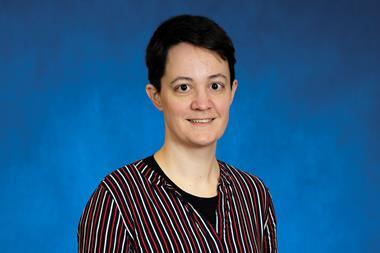Many institutional investors shun hedge funds as opaque in process and therefore difficult to comprehend. Such investors can always fall back on the Warren Buffett adage that if you do not understand something, you should not invest in it.
Far rarer are those institutions that have tasted the fruits of hedge funds, enjoyed them but still preferred other means of making money. AP2, the Swedish buffer fund famously culled nine external hedge fund mandates in 2005, citing the labour of monitoring the funds as prohibitively high.
Länsförsäkringar, the mutually owned investment company for Sweden’s regional insurers, is another of this rare breed.
The SKK122bn (€12.6bn) company portfolio enjoyed returns in the order of 20% from its hedge fund investments but decided they were still too expensive. “Some 20-40% of performance goes on fees,” explains Gustav Karner, (pictured right) Länsförsäkringar’s chief financial officer. “We think that’s too much.” He subscribes to recent analysis that in spite of their ‘all-weather’ tag, the majority of hedge fund returns, at least in long/short equity, can be attributed to beta.
For Karner, that leads to two possible courses of action: the first is to buy that bit more beta exposure in equities and credit, preferably via options. The second is to stick with other alternatives: private equity, infrastructure and volatility.
Of the latter group, private equity has been Länsförsäkringar’s oldest and best friend. “The funds’ total return since we first started in 1989 has been in excess of 30% annualised,” says Karner. “The best will continue to deliver in the future because they make investee companies more motivated.”
(Interestingly, when AP2 cancelled external hedge fund mandates, it redeployed money into long-only equity and private equity.)
Länsförsäkringar uses some of the best-known names in this field: IK, Texas Pacific Group, Bain Capital and Kohlberg Kravis Roberts. Each region - US, EU and Sweden - has SKK3.25bn, or one-third of the alternatives allocation, the total being 10% of the total fund. But in five years’ time, Karner reckons that allocation could be up to 15-25% of total assets, depending on how the rules governing Swedish pension funds change. He fears that the solvency regulations for banks in the EU might be applied to insurers.
If the rules do not change and the decision rests solely with an insurers’ central investment team, then allocation will be a heavily quantitative decision. Länsförsäkringar’s central team is heavy on number crunchers, according to Karner, who has a master’s degree in computer science.
Half of its 20 investment professionals are dedicated to asset allocation, five working with external managers in quoted securities while the others concentrate on alternatives. Karner adds that the company also takes a long-term view, which may be one reason why it is looking to add to private equity with the same managers it already uses.
Länsförsäkringar’s 24 regional insurers together write more non-life insurance than any other Swedish provider (about 30%) and 10% of all life business in the country. Although the portfolios are run separately, their asset allocation is not wildly different (see chart). In the first half of the year, the company cut equities by roughly 10-30%, with approximately 45% in bonds, 15% in alternatives and 10% in property.
The fund is not afraid to index where it sees efficient markets, for example in the US, the UK, continental Europe and Sweden. Karner is sceptical about overweighting domestic markets; he does not believe in the information advantage claimed by some local practitioners and their clients. “Domestic Swedish funds very often have poor realised performance under the index,” he says.
Likewise, he is not over-impressed by other long-term investors in the Nordic region that have decided to increase the certainty of their liability hedge by entering into swap contracts. Karner believes swaptions are a more cost-effective and flexible means of hedging when necessary.
Länsförsäkringar was Sweden’s top-performing insurer last year by some way: 6.7% versus second-placed AMF’s 4.9%. This year is a different story, and it remains to be seen whether the central asset allocation team’s cut in equities is enough to keep the company’s ranking in a most competitive market.

































No comments yet